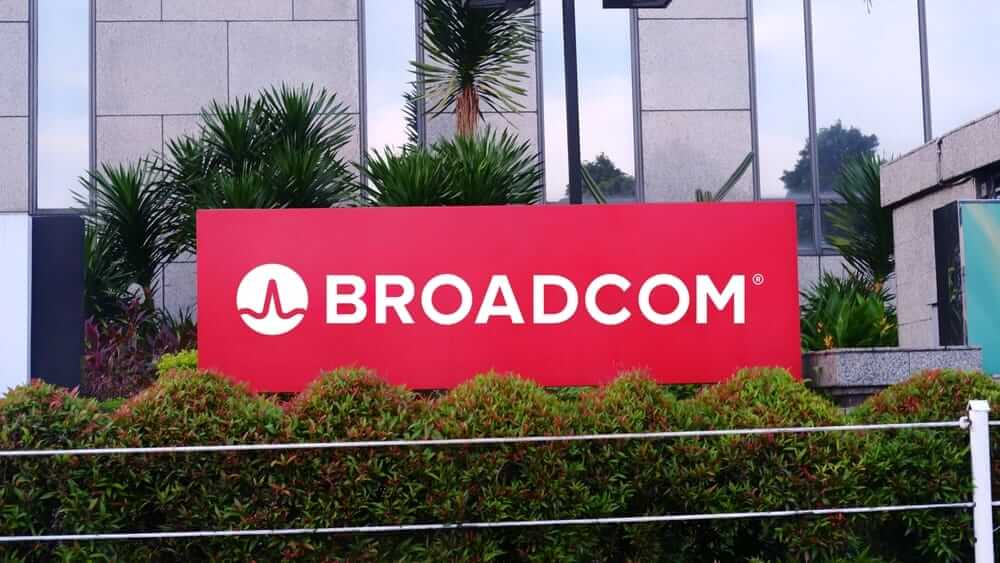Nvidia (NVDA) has been the undisputed king of the artificial intelligence (AI) revolution. It creates GPUs (graphics processing units) utilized in almost every industry and owns the CUDA software ecosystem, which makes its hardware indispensable for AI developers. Meanwhile, Broadcom (AVGO) is an infrastructure company that creates networking chips, AI accelerators (XPUs), and infrastructure software to help large-scale computer systems run smoothly.
AVGO stock has surged 53% year-to-date (YTD), outperforming NVDA’s gain of 38% and the tech-heavy Nasdaq Composite Index ($NASX) gain of 20%.
Broadcom continues to deliver record results, deepen its technological moat, and sharpen its long-term strategy. But the company’s AI-driven growth story is still in its early innings and has a lot of room to run.
www.barchart.com
Broadcom designs, develops, and sells chips and infrastructure software for data centers, networking, broadband, wireless communications, and enterprise computing. Its Semiconductor Solutions segment provides chips that power modern computing, networking, and connectivity systems. It is the backbone of Broadcom’s business and its largest segment. However, since the VMware acquisition in 2023, the company’s Infrastructure Software segment has also started growing significantly.
In the third quarter, Broadcom reported total revenue of $15.9 billion, up 22% year-over-year (YoY), marking its fourth consecutive record quarter. This performance was driven by explosive demand for AI-centric semiconductors and strong momentum in the company’s infrastructure software division. Semiconductor revenue alone amounted to $9.2 billion, a 26% YoY rise driven mostly by AI sales. Notably, AI semiconductor revenue increased 63% to $5.2 billion, continuing Broadcom’s ten-quarter streak of strong AI growth.
Broadcom’s outstanding performance has been fueled by the rapid expansion of its XPU business, which provides custom AI accelerators for large-scale, high-performance computing. XPUs accounted for 65% of Broadcom’s AI revenue in Q3, as three important hyperscale customers continued to strive for compute self-sufficiency. In addition, the company secured a $10 billion order for AI racks from a mystery fourth customer, incorrectly believed to be OpenAI.
Story Continues
However, OpenAI and Broadcom have announced a multi-year strategic partnership to deploy 10 gigawatts of custom AI accelerators, combining OpenAI-designed processors with Broadcom’s Ethernet and connectivity solutions. These accelerator racks, which are scheduled to be deployed between 2026 and 2029, will power next-generation AI clusters.
This month, Broadcom introduced Thor Ultra, the industry’s first 800G AI Ethernet Network Interface Card (NIC), which represents a significant improvement in AI networking speed and scalability. In addition, the company announced the industry’s first Wi-Fi 8 silicon ecosystem, kicking off a new era of AI-powered wireless connectivity for smartphones, PCs, IoT devices, and vehicles.
These achievements support the company’s fiscal 2026 AI outlook, which anticipates significant revenue growth next year.
According to management, Broadcom’s consolidated backlog has hit $110 billion, the highest in the company’s history. This backlog indicates strong demand from AI customers and ensures future revenue. Adjusted earnings increased by 36.3%, reaching $1.69 per share. The quarter’s gross margin stood at 78.4%, driven by increased software contribution and a favorable semiconductor mix.
While AI semiconductors remain the company’s backbone, infrastructure software continues to be a significant profit driver. In Q3, the segment generated $6.8 billion in revenue, a 17% increase YoY. The gross margin in the infrastructure software segment increased to 93% from 90% a year ago. Broadcom released VMware Cloud Foundation (VCF) 9.0 this quarter, a fully integrated cloud platform that allows organizations to execute traditional and AI workloads on-premises or in any cloud environment.
The company generated free cash flow of $7 billion, or 44% of revenue, highlighting Broadcom’s ability to fund growth while rewarding shareholders. As a dividend stock, the company paid out $2.8 billion in cash dividends during the quarter and maintained a strong balance sheet with $10.7 billion in cash. In a move that signals stability and long-term confidence, the board of directors extended Hock Tan’s tenure as CEO through 2030.
Broadcom can compete with Nvidia in some areas of the AI ecosystem, but it cannot compete with the semiconductor giant across the entire stack. Nvidia’s dominance in the AI business remains unshakeable, and Broadcom may not be able to dethrone it by 2030. However, under Tan’s leadership, Broadcom’s disciplined strategy, innovation, operational excellence, and capital efficiency may propel the business farther into the AI infrastructure ecosystem, perhaps positioning it as Nvidia’s most formidable rival by 2030.
Overall, the consensus for AVGO stock is a “Strong Buy.” Out of the 40 analysts in coverage, 35 rate it a “Strong Buy,” two say it is a “Moderate Buy,” and three recommend a “Hold.” Based on the mean target price of $397.92, the stock has a potential upside of 12% from current levels. Plus, its high price estimate of $460 indicates the stock could gain as much as 30% in the next 12 months.
www.barchart.com
On the date of publication, Sushree Mohanty did not have (either directly or indirectly) positions in any of the securities mentioned in this article. All information and data in this article is solely for informational purposes. This article was originally published on Barchart.com

